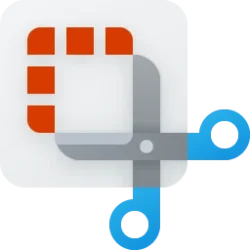Navigation
Install the app
How to install the app on iOS
Follow along with the video below to see how to install our site as a web app on your home screen.
Note: This feature may not be available in some browsers.
More options
Style variation
-
Disable Automatic Windows Updates in Windows 11
This tutorial will show you how to disable Windows Update from automatically downloading and installing updates in Windows 10 and Windows 11.- Brink
- Replies: 17
-
Use ViVeTool to Enable or Disable Hidden Features in Windows 11
This tutorial will show you how to use ViVeTool to enable or disable hidden features in Windows 10 and Windows 11.- Brink
- Replies: 49
-
Restore Classic File Explorer with Ribbon in Windows 11
This tutorial will show you how to restore the classic File Explorer with Ribbon for your account or all users in Windows 11.- Brink
- Replies: 422
-
Create Windows 11 Bootable USB Installation Media
This tutorial will show you how to create a bootable USB flash drive used to install Windows 11 with UEFI support.- Brink
- Replies: 135
-
Uninstall or Reinstall Copilot app
This tutorial will show you different ways to uninstall or reinstall the Copilot app for your account or all users in Windows 10 and Windows 11.- Brink
- Replies: 0
-
Add or Remove "Learn about this picture" Desktop icon
This tutorial will show you how to add or remove the "Learn about this picture" desktop icon when using Windows Spotlight as your desktop background for your account in Windows 11 and Windows 10.- Brink
- Replies: 27
-
Use SFC to Repair System Files in Windows 11
This tutorial will show you how to run the System File Checker (SFC) tool to repair missing, corrupted, and modified system files in Windows 10 and Windows 11.- Brink
- Replies: 25
-
Download Official Windows 11 ISO file from Microsoft
This tutorial will show you how to download an official Windows Server ISO or Windows 11 64-bit or ARM64 ISO file from Microsoft.- Brink
- Replies: 429
-
Repair Install Windows 11 with an In-place Upgrade
This tutorial will show you how to do a repair install of Windows 11 by performing an in-place upgrade without losing anything.- Brink
- Replies: 339
-
Clean Install Windows 11
This tutorial will show you step by step on how to clean install Windows 11 at boot on your PC with or without an Internet connection and setup with a local account or Microsoft account.- Brink
- Replies: 245
You are using an out of date browser. It may not display this or other websites correctly.
You should upgrade or use an alternative browser.
You should upgrade or use an alternative browser.
Tutorials
Windows 11 tutorials, tricks, tips, and guides.
Filters
Show only:
Loading…
This tutorial will show you how to change the hover delay time to show a taskbar thumbnail live preview for your account in Windows 10 and Windows 11.
The setting in this tutorial no longer works starting with at least Windows 11 version 24H2.
The taskbar is a horizontal bar at the bottom of your desktop in Windows 11 that shows the Start menu, Search, Task View, Widgets, Chat, File Explorer, Microsoft Edge, and Microsoft Store icons aligned to the center by default. The taskbar corner includes the notification area icons, Quick Settings (Win+A), and Notification Center (Win+N) with the clock and calendar.
When you hover the pointer over an icon on the taskbar with an open window, you will see the thumbnail preview(s) of the open...
This tutorial will show you how to add or remove the Text Formatting toolbar in Notepad for your account in Windows 11.
Notepad is a fast and simple text editor that can be used to view, edit, and search through plain text documents instantly.
Starting with Notepad version 11.2504.52.0 and higher to Windows Insiders in the Canary, Dev, Beta, and Release Preview Channels on Windows 11, Microsoft is beginning to roll out lightweight formatting in Notepad, providing additional flexibility in how you structure content across your files. The experience supports Markdown style input and files for users who prefer to work directly with the lightweight markup language. To get started, use the new formatting toolbar to apply formatting as you...
This tutorial will show you how to set a default keyboard layout input method override for your account in Windows 11.
In Windows, you can change your keyboard layout to type in another language or input method you want to use..
The language of your keyboard layout controls the characters that appear on your screen when you type. By using the different layouts, you can type all the characters for the language, including diacritics such as the umlaut (ä) in German and the tilde (ñ) in Spanish.
When you add a language, the default keyboard layout for the language will be installed by default.
You can install additional keyboards for language-specific key layouts and input options. Adding an input language lets you set a...
This tutorial will show you how to change the default Alt+Shift+S keyboard shortcut used to open Visual Search in Microsoft Edge for your account in Windows 10 and Windows 11.
Visual Search is a feature in Microsoft Edge that lets you search for images on Bing.
Visual Search lets you quickly explore more related content about entities in an image.
Visual Search is available by default via image hover menu, context menu, and Alt+Shift+S keyboard shortcut.
You can change the default Alt+Shift+S Visual Search keyboard shortcut to a custom shortcut you want to use instead.
This setting is currently only available in the Canary and Dev builds of Microsoft Edge.
EXAMPLE: Current Visual Search keyboard shortcut shown on context menu in...
This tutorial will show you how to enable or disable the Visual Search Alt+Shift+S keyboard shortcut in Microsoft Edge for your account in Windows 10 and Windows 11.
Visual Search is a feature in Microsoft Edge that lets you search for images on Bing.
Visual Search lets you quickly explore more related content about entities in an image.
Visual Search is available by default via image hover menu, context menu, and Alt+Shift+S keyboard shortcut.
You can turn on or off the keyboard shortcut used to open Visual Search in Microsoft Edge.
This setting is currently only available in the Canary and Dev builds of Microsoft Edge.
Option One: Turn On or Off Visual Search Keyboard Shortcut in Microsoft Edge in Settings
Option Two: Turn On...
This tutorial will show you how to show or hide the touch keyboard icon on the taskbar system tray for your account in Windows 11.
Windows 11 includes a touch keyboard you can click/tap on to enter text. This can be handy if you have a PC with a touchscreen without a physical keyboard.
The touch keyboard icon on the system tray on the taskbar corner makes it easy to open the touch keyboard on demand.
If you have a tablet device, the touch keyboard will automatically open when you need it. Just tap where you’d like to enter text and the touch keyboard will pop up, or press the touch keyboard icon on the taskbar.
If you have a non-touch PC (ex: desktop), you could still use the touch keyboard if you like, but you will have to manually...
This tutorial will show you how to enable or disable allowing HDR video streaming even when HDR is off for your account in Windows 11.
HDR content offers better brightness and color capabilities compared to traditional content (sometimes called standard dynamic range [SDR] content). Traditional content typically shows details in a bright part of a scene or a darker part of a scene but not in both parts at the same time. For example, if the shot focuses on a bright window in the scene, details in the shadow are lost.
Starting with Windows 11 build 26100.4202 (24H2), a new "Allow HDR video streaming even when HDR is off" setting has been added that gets applied to all displays.
Option One: Enable or Disable HDR Video Streaming even...
This tutorial will show you how to enable or disable the Visual Search feature in Microsoft Edge for your account or all users in Windows 10 and Windows 11.
Visual Search is a feature in Microsoft Edge that lets you search for images on Bing.
Visual Search lets you quickly explore more related content about entities in an image.
Visual Search is available by default via image hover menu, context menu, and Alt+Shift+S keyboard shortcut.
Option One: Turn On or Off Visual Search in Microsoft Edge for Current User in Settings
Option Two: Enable or Disable Visual Search in Microsoft Edge for All Users using REG file
EXAMPLE: Visual Search on context menu and hover menu in Microsoft Edge
Turn On or Off Visual Search in...
This tutorial will show you how to upgrade from Windows 11 Home to Windows 11 Pro without losing anything.
You can directly upgrade your device from Windows 11 Home to the Windows 11 Pro edition without losing anything.
Upgrading to Windows 11 Pro will include features only in the Pro edition.
Reference:
https://support.microsoft.com/en-us/windows/upgrade-windows-home-to-windows-pro-ef34d520-e73f-3198-c525-d1a218cc2818
https://www.microsoft.com/en-us/windows/business/windows-11-pro
You must be signed in as an administrator to upgrade your edition of Windows 11.
Option One: Upgrade Windows 11 Home to Windows 11 Pro from Microsoft Store
Option Two: Upgrade Windows 11 Home to Windows 11 Pro by Changing Product Key
Upgrade...
This tutorial will show you how to manually turn on or off Smart App Control in Windows 11.
Smart App Control (SAC) is a new security feature starting with Windows 11 build 22567. Smart App Control can work alongside your other security software, such as Microsoft Defender, for added protection.
Smart App Control adds significant protection from malware, including new and emerging threats, by blocking apps that are malicious or untrusted. Smart App Control also helps to block potentially unwanted apps, which are apps that may cause your device to run slowly, display unexpected ads, offer extra software you didn't want, or do other things you don't expect.
Smart App Control starts in evaluation mode. This is a period during which...
This tutorial will show you how to find and view your product key in Windows 10 and Windows 11.
A Windows product key is a 25-character code used to activate Windows. It looks like this:
PRODUCT KEY: XXXXX-XXXXX-XXXXX-XXXXX-XXXXX
Depending on how you got your copy of Windows 10 or Windows 11, you'll need either a 25-character product key or a digital license to activate it. A digital license (called a digital entitlement in Windows 10, Version 1511) is a method of activation in Windows 10 and Windows 11 that doesn't require you to enter a product key. Without one of these, you won't be able to activate your device.
Where to find your product key depends on how you got your copy of Windows.
A new PC running Windows
The product key...
Latest Tutorials
-
-
Network and Internet Change Preferred Band for Wi-Fi adapter in Windows 11
- Started by Brink
- Replies: 0
-
-
Browsers and Mail Enable or Disable Extensions from Other Stores in Microsoft Edge on Windows 11
- Started by Brink
- Replies: 0
-
-
-
-
Browsers and Mail Enable or Disable Extension Developer Mode in Microsoft Edge on Windows 11
- Started by Brink
- Replies: 0
-
Browsers and Mail Pin or Unpin Extensions on Toolbar in Microsoft Edge on Windows 11
- Started by Brink
- Replies: 4
-
Browsers and Mail Enable or Disable Extensions in Microsoft Edge InPrivate Browsing on Windows 11
- Started by Brink
- Replies: 0
Tutorial Tags
android
background
battery
bitlocker
bluetooth
boot
color
context menu
copilot
defender
desktop
display
drive
edge
file explorer
folder
hyper-v
icon
keyboard
location
mouse
notepad
notifications
onedrive
outlook
paint
pen
photos
pointer
power
printer
recall
screenshot
search
settings
share
shortcuts
sign-in
sound
start menu
store
taskbar
terminal
theme
touch
usb
voice
wi-fi
widgets
xbox




















